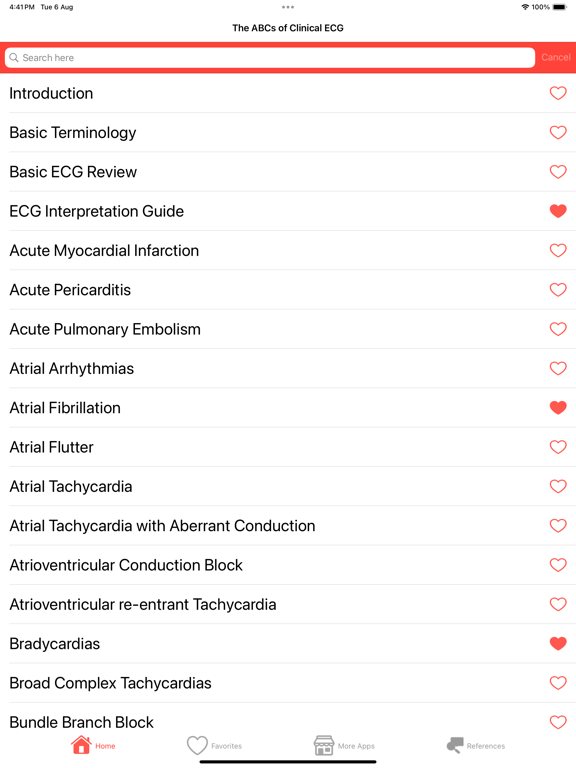Clinical ECG Interpretation
0★
Ratings: 0
Screenshots






App Description
Many medical students in their clinical years have a good level of competency in interpreting the primary ECG parameters, but their ability to recognize ECG signs of emergencies and common heart abnormalities is usually low. ECG interpretation skills are determined not only by attendance at regular ECG classes but by self-education as well. Electrocardiogram (ECG) interpretation is an essential skill for emergency medicine (EM) physicians.
Electrocardiography is the process of producing an electrocardiogram (ECG or EKG), a recording of the heart's electrical activity through repeated cardiac cycles. It is an electrogram of the heart which is a graph of voltage versus time of the electrical activity of the heart using electrodes placed on the skin. These electrodes detect the small electrical changes that are a consequence of cardiac muscle depolarization followed by repolarization during each cardiac cycle (heartbeat).
During each heartbeat, a healthy heart has an orderly progression of depolarization that starts with pacemaker cells in the sinoatrial node, spreads throughout the atrium, and passes through the atrioventricular node down into the bundle of His and into the Purkinje fibers, spreading down and to the left throughout the ventricles. This orderly pattern of depolarization gives rise to the characteristic ECG tracing. To the trained clinician, an ECG conveys a large amount of information about the structure of the heart and the function of its electrical conduction system. Among other things, an ECG can be used to measure the rate and rhythm of heartbeats, the size and position of the heart chambers, the presence of any damage to the heart's muscle cells or conduction system, the effects of heart drugs, and the function of implanted pacemakers.
App content:
1. Introduction
ECG history
Leads
Heart Rate
Rhythm
Cardiac Axis
Relationship Between Heart Rate, Rhythm and Axis
Signal Processing In ECG
ECG Paper Study and interpretation
2. Basic Terminology
P Wave and PR Interval
QRS Complex
ST Segment
T Wave
QT Intervals
U Wave
ECG Terminology Review
3. Basic ECG Review
MI & ECG
Thyroid Disorder And ECG
Arrhythmia and ECG
Emergency ECG
4. ECG Interpretation Guide
ECG Rules
Approach to Interpretation of ECG
Commenting on ECG
5. Acute Myocardial Infarction
6. Acute Pericarditis
7. Acute Pulmonary Embolism
8. Atrial Arrhythmias
9. Atrial Fibrillation
10.
 AppGoblin
AppGoblin